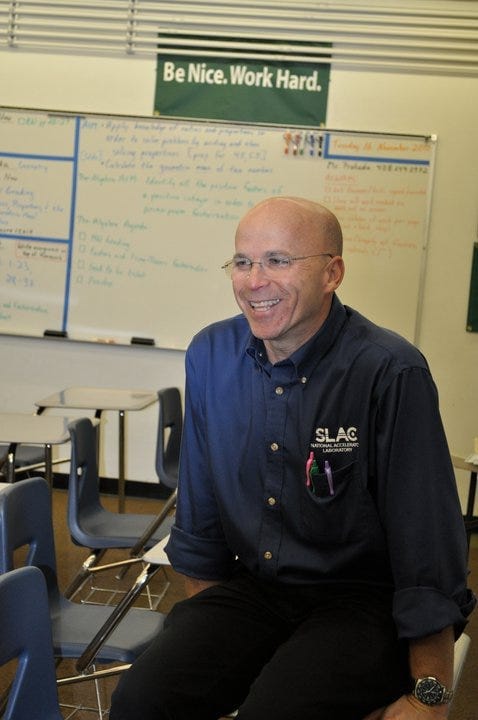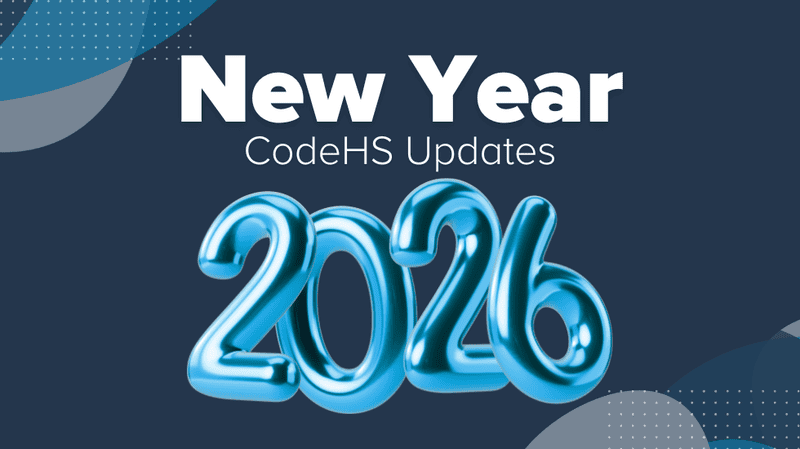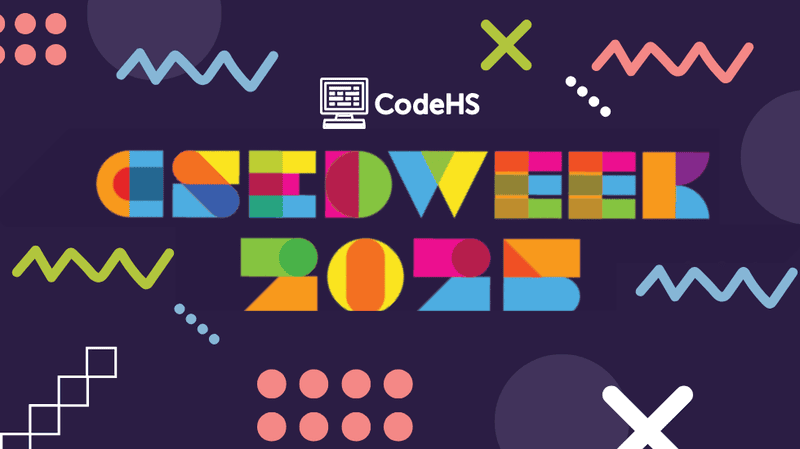From Industry to the Classroom with Joe Prohaska
KIPP Heartwood

“I always loved my teachers, looked up to them, loved school, so it was natural for me to want to be a teacher.” — Joe Prohaska
Joe Prohaska made his dream of becoming a teacher happen, but not before spending a couple of decades as a software developer at some of the big names in the emerging IT and computer systems industry including Sun Microsystems and Teknowledge. After teaching math for 5 years, Joe has now started to bring computer science curriculum to KIPP Heartwood Academy.
Joe originally found his passion for programming as an undergrad at Stanford, where he took computer science classes even before CS was offered as an undergraduate major. The aesthetic component of programming drew Joe to computer science and he recalls the emphasis on developing good coding style from his very first days learning to code. Decades later, he still firmly believes in the computer science adage coined by MIT Professor Harold Tabelson, “Programs must be written for people to read, and only incidentally for machines to execute.”. You can hear this in the way that Joe talks about computer science and what he loves about it: “the idea of the art of taking a problem and decomposing it and then expressing it elegantly, beautifully, cleanly.” One of his most inspiring instructors later hired him to work at an artificial intelligence startup, and he went on to have a long and successful career as a software developer.
“the idea of the art of taking a problem and decomposing it and then expressing it elegantly, beautifully, cleanly.”
However, the dream to become a teacher remained and 8 years ago, Joe left the computer systems industry to fulfill it. He would have loved to teach computer science, but schools were looking for folks to teach math and science; so Joe entered the classroom as a math teacher at a KIPP charter school in San Jose. KIPP is a national charter network of college preparatory schools dedicated to making sure students from underserved communities are college and career ready. Today, KIPP has over 200 brick and mortar schools all over the country, including KIPP Heartwood Academy, one of the first KIPP schools in the Bay Area. The middle school has 400 students between 5th-8th grade about 80% of whom are Latino and 15% of whom are Asian. Joe describes the school environment as pretty disciplined, with great kids and supportive families.
“They get this sort of education in Palo Alto and elsewhere, why shouldn’t we offer it to our kids too?”
With the growing awareness of the importance of computer science education, Joe jumped on the opportunity to bring computer science classes to KIPP Heartwood. After taking part in the Hour of Code 3 years ago, the Principal and Assistant Principal at KIPP Heartwood asked Joe if he would be interested in teaching an actual programming class. Joe thought it was a fantastic idea, “they get this sort of education in Palo Alto and elsewhere, why shouldn’t we offer it to our kids too?”
Excited to dive in, Joe realized that he wasn’t actually sure where to start when it comes to teaching a computer science class. There weren’t any clear cut standards for the course, or a scope and sequence he was supposed to follow.. he had free reign, which was simultaneously exciting but also somewhat intimidating. What’s the best way to teach this stuff?! How could he share his own knowledge and passion for computer science with students who haven’t ever seen a line of code before?
“Whether you want to go work in molecular biology or this or that field, computer science is so relevant!”
Joe wanted to teach students the perennial aspects of coding like problem solving and computational thinking. These components of computing, he thinks, haven’t changed that much since he was learning to code back at Stanford a few decades before. In fact, one of the first programming exercises that Joe ever had to do was to program Karel — who for Joe was a robot not a dog, but same idea. “Here I am hundreds of years later using an online program with Karel!” Joe says. The fundamental concepts and disciplined way of thinking that students can learn with an educational tool like Karel is really powerful. And Joe hopes to help his students develop this same computational mindset, “whether you want to go work in molecular biology or this or that field, computer science is so relevant!”.
With that in mind, Joe has loved using CodeHS this year. CodeHS addresses the need Joe describes: you have someone on your staff who is interested in computer science and with CodeHS, everything you need to lead a successful class is right at your fingertips. “CodeHS does as much of the heavy-lifting as possible!” In an effort to give his students familiarity with computational thinking, problem solving, decomposition, Joe says, “it’s working, the kids are learning, they’re having fun, I’m there to impose some kind of discipline.” And he’s excited to keep growing the program.
“CodeHS does as much of the heavy-lifting as possible!”
Joe says that after getting his feet wet this year, he’s excited to try customizing the curriculum for his future classes. With CodeHS, everything you need is already there. But what is particularly exciting is that once you do get the hang of it, there’s so much opportunity to make it your own! He’s excited to keep building the computer science program and sharing his passion for computer science with even more students.
“I know they’re not in a position to offer me a sabbatical after just 5 years of teaching, but I always say that this is the reward! It is a reward to now be able to teach this course!” — Joe Prohaska


